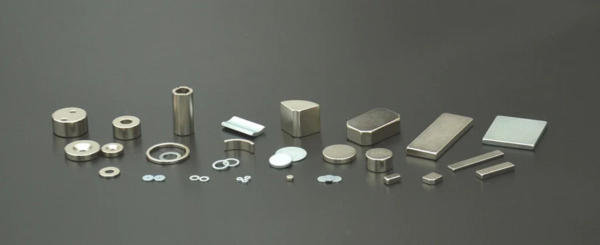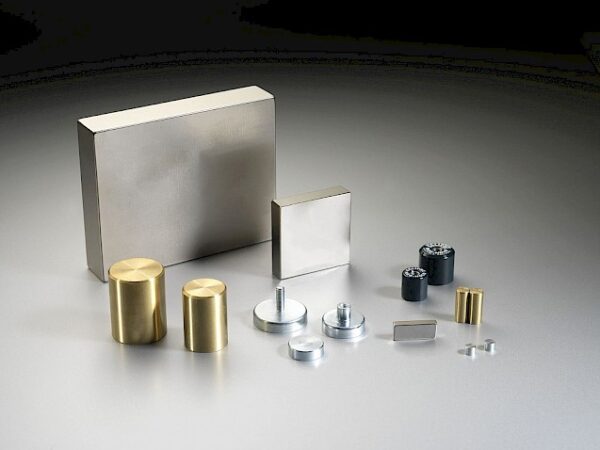A magnet is an object or material that produces a magnetic field, which is an invisible force that attracts or repels certain materials, especially metals like iron, nickel, and cobalt. Magnets have two poles, commonly referred to as the north pole and the south pole. Opposite poles attract each other, while like poles repel each other.
- Magnet as an Object: In its most common usage, a magnet is an object that produces a magnetic field and attracts certain metals, such as iron and steel. Magnets have two poles – a north pole and a south pole – and opposite poles attract while like poles repel.
- Magnet as a Metaphor: “Magnet” is sometimes used metaphorically to describe something that attracts or draws people’s attention or interest. For example, a person with a charismatic personality might be described as a “magnet” for attention.
- Magnet Schools: In education, a “magnet school” is a type of public school with specialized curricula or programs designed to attract students from across a school district. These schools often focus on specific subjects like science, technology, arts, or foreign languages.
- Magnetic Resonance Imaging (MRI): In medical imaging, MRI stands for Magnetic Resonance Imaging. It’s a non-invasive imaging technique that uses strong magnets and radio waves to create detailed images of the inside of the body. It’s commonly used to visualize soft tissues like the brain, muscles, and organs.
- Magnetic Materials and Fields: In physics, “magnetism” refers to the property of materials that respond to an applied magnetic field. This field of study involves understanding the behavior of magnetic materials and how magnetic fields are generated and interact.
Without more context, it’s hard to determine which specific meaning of “magnet” you’re referring to. If you have a particular context in mind, please provide more information so I can give you a more accurate answer.
How many types of magnets ?

There are several types of magnets, each with its own unique properties and characteristics. Here are the main types of magnets:
- Permanent Magnets: These are the most common type of magnets that we encounter in everyday life. They retain their magnetic properties once magnetized and do not require an external source of magnetism to maintain their field. Examples include fridge magnets and the magnets used in speakers.
- Temporary Magnets: These magnets become temporarily magnetic when exposed to a strong magnetic field. They lose their magnetism once the external magnetic field is removed. Soft iron is an example of a temporary magnet.
- Electromagnets: These are magnets created by passing an electric current through a coil of wire. The magnetic field is produced when the current flows and disappears when the current stops. Electromagnets are used in various applications such as industrial lifting equipment and in the generation of magnetic fields for scientific experiments.
- Superconducting Magnets: Superconducting materials, when cooled to extremely low temperatures, can exhibit zero electrical resistance and expel magnetic fields. This property is used to create very strong and stable magnetic fields in devices like MRI machines and particle accelerators.
- Ferrite Magnets: These are ceramic magnets made from a type of iron oxide called ferrite. They are commonly used in refrigerator magnets and small electronic devices due to their low cost and relatively good magnetic properties.
- Rare-Earth Magnets: This category includes neodymium magnets and samarium cobalt magnets. They are known for their exceptional strength and are used in a wide range of applications, including electronics, medical devices, and renewable energy technologies.
- Flexible Magnets: These are made from flexible materials like rubber or plastic that are embedded with magnetic particles. They are often used for signage and lightweight applications.
- Refrigerator Magnets: These are typically made from ceramic or ferrite materials and are used to attach notes and papers to metal surfaces like refrigerators.
- Neodymium Magnets: These are a type of rare-earth magnet and are incredibly strong for their size. They are used in various applications including headphones, hard drives, and magnetic closures.
- Badge Magnets: These are small, disc-shaped neodymium magnets that are often used to attach badges, name tags, or lightweight items to clothing without the need for pins or clips. They are commonly used in conferences, events, and workplaces where it’s important to avoid damaging clothing with traditional pins.
- NdFeB Balls / Sphere Magnets: These are spherical neodymium magnets often used for artistic and creative purposes, as well as for educational demonstrations. They can be arranged in various patterns to create interesting sculptures, shapes, and structures.
- NdFeB Block Magnets: Neodymium block magnets are rectangular or cuboid-shaped magnets that offer strong magnetic performance in a compact form. They are used in a wide range of applications, from industrial machinery to consumer electronics.
- NdFeB Disc & Cylinder Magnets: These are round, flat magnets that come in the shape of discs or cylinders. They are used in various applications where a strong yet thin magnet is needed. Examples include sensors, switches, and magnetic closures.
- Neodymium Ring Countersunk Magnet: This type of magnet has a hole in the center and a countersunk surface, meaning it has a tapered edge designed to accommodate a screw head. These magnets are often used when you want to attach the magnet to a surface using a screw, creating a flush and secure connection.

All of these types of magnets are made from neodymium-iron-boron (NdFeB), which is a type of rare-earth magnet known for its exceptional strength. These magnets are commonly used in applications where a high strength-to-size ratio is important. They are found in a wide range of industries, including electronics, automotive, medical equipment, renewable energy, and more.
When handling neodymium magnets, it’s important to exercise caution due to their strong magnetic fields. They can attract each other with great force and can also pose risks if mishandled. Additionally, these magnets are brittle and can break if subjected to impact, so care should be taken during handling and installation.
10. Alnico Magnets: These are made from a combination of aluminum, nickel, and cobalt. They have strong magnetic properties and are often used in applications where high temperature stability is required.
The choice of magnet type depends on factors such as required strength, temperature stability, and cost for a particular application.



Pingback: The Power and Potential of Neodymium Magnets - BUI Mill Parts